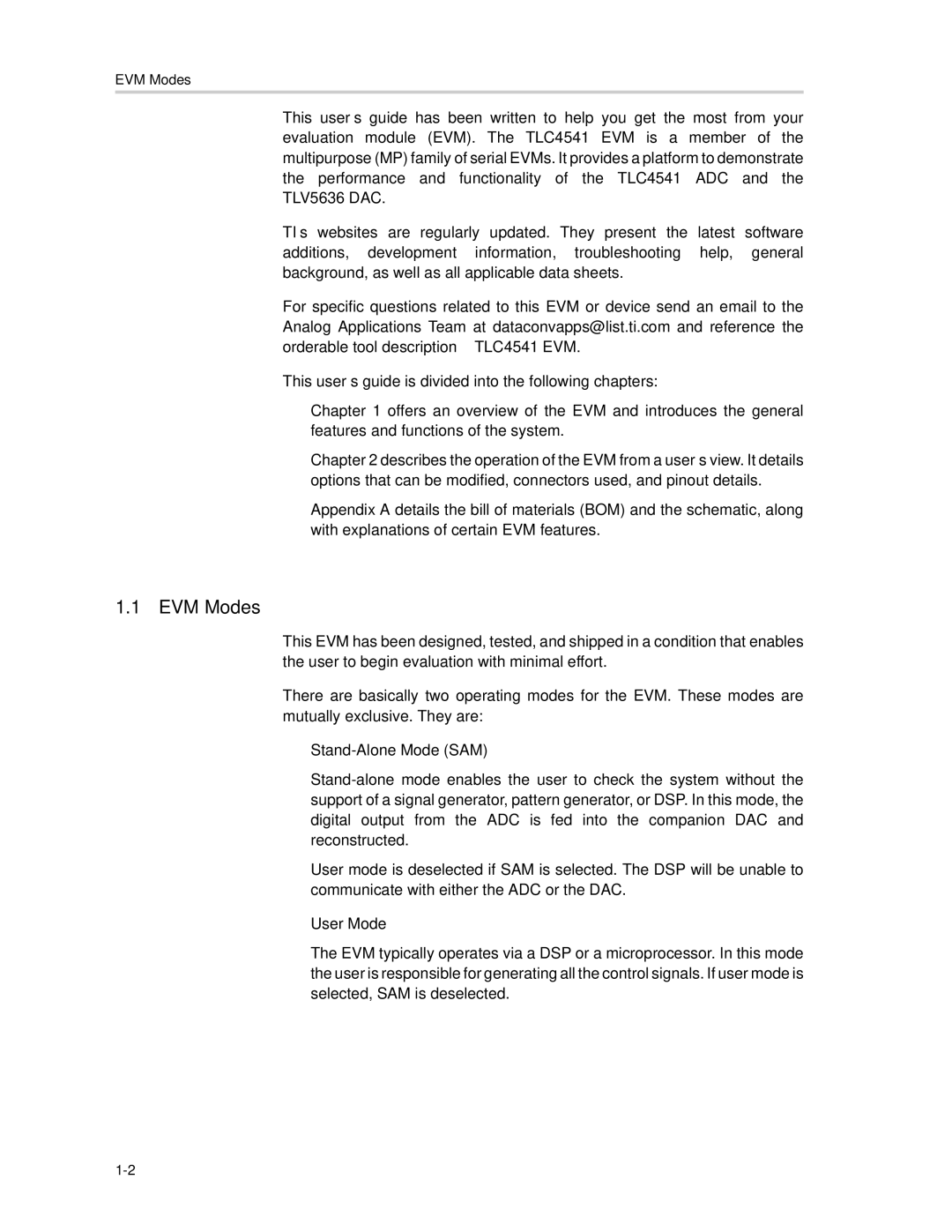EVM Modes
This user’s guide has been written to help you get the most from your evaluation module (EVM). The TLC4541 EVM is a member of the multipurpose (MP) family of serial EVMs. It provides a platform to demonstrate the performance and functionality of the TLC4541 ADC and the TLV5636 DAC.
TI’s websites are regularly updated. They present the latest software additions, development information, troubleshooting help, general background, as well as all applicable data sheets.
For specific questions related to this EVM or device send an email to the Analog Applications Team at dataconvapps@list.ti.com and reference the orderable tool description – TLC4541 EVM.
This user’s guide is divided into the following chapters:
-Chapter 1 offers an overview of the EVM and introduces the general features and functions of the system.
-Chapter 2 describes the operation of the EVM from a user’s view. It details options that can be modified, connectors used, and pinout details.
-Appendix A details the bill of materials (BOM) and the schematic, along with explanations of certain EVM features.
1.1 EVM Modes
This EVM has been designed, tested, and shipped in a condition that enables the user to begin evaluation with minimal effort.
There are basically two operating modes for the EVM. These modes are mutually exclusive. They are:
-Stand-Alone Mode (SAM)
User mode is deselected if SAM is selected. The DSP will be unable to communicate with either the ADC or the DAC.
-User Mode
The EVM typically operates via a DSP or a microprocessor. In this mode the user is responsible for generating all the control signals. If user mode is selected, SAM is deselected.
